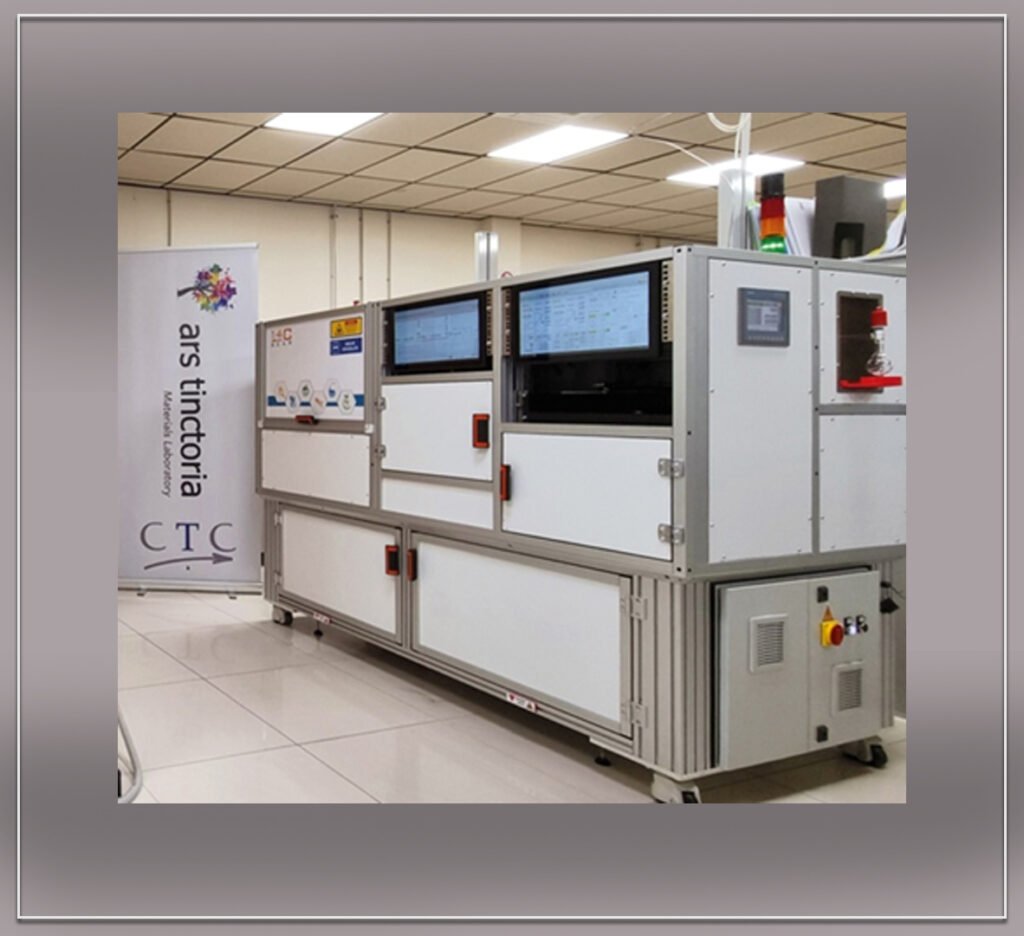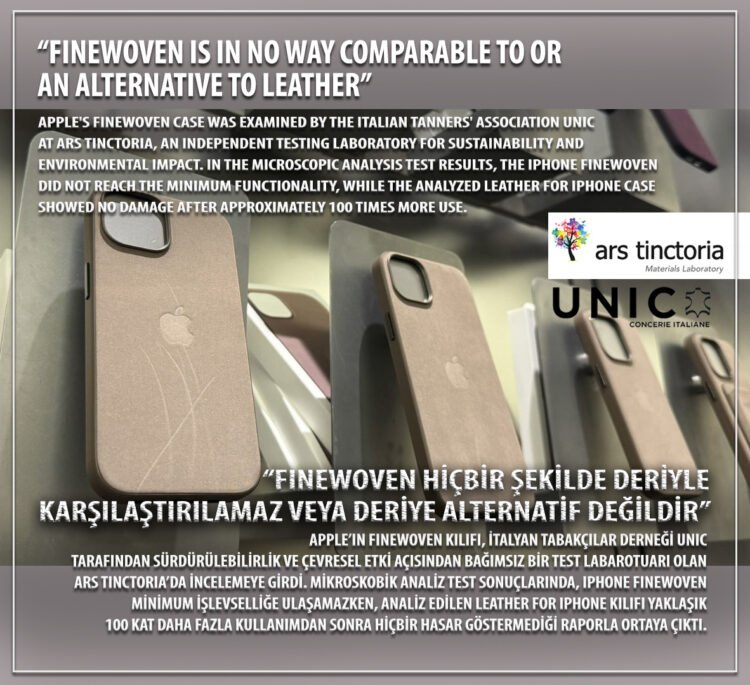Apple’s FineWoven Case was examined by the Italian tanners’ association UNIC at Ars Tinctoria, an independent testing laboratory for sustainability and environmental impact. In the microscopic analysis test results, the iPhone FineWoven did not reach the minimum functionality, while the analyzed Leather for iPhone case showed no damage after approximately 100 times more use.
It was reported that a fossil-based material was used instead of leather in the covers that Apple launched with the introduction of the iPhone 15 in September, and laboratory test results were contrary to sustainability and green transformation. In his press release about Apple’s initiative to reject leather, he also explained that he wanted to increase the sustainability of his products. The environmental impact of two iPhone 15 Pro Max FineWoven cases (Burgundy and Taupe) is reported by comparing them with a Leather sample developed for the iPhone case and supplied for this scope over multiple seasons.
The Italian tanners’ association UNIC, in terms of environmental impact and sustainability, “the microscopic and bio-based composition of the two materials, which allows the measurement of the Fossil carbon ratio (EN 16640 method) was analyzed through the SCAR 14C Analyzer (Bio-based of the renewable carbon ratio). The result is also Biochar production.” , It also describes the possibility of application to different end-of-life options, such as biofertilizers, etc. The amount of biological (and therefore non-fossil) carbon present The results outline how the analyzed leather has a compact structure, with the absence of interfiber polymers and a 99% bio-based composition. FineWowen, on the other hand, has a dense weave of polymer fibers (making any attempt at recycling difficult) and is 1% bio-based.” All this essentially means that “leather is a natural, recyclable material of biological origin, which will ‘return’ to nature quite quickly at the end of the product’s life.” But FineWoven says no, because it is a derivative of Petroleum, of “completely fossil origin”. It is difficult to recover It is a plastic material that is highly toxic. It will remain as waste in nature for thousands of years, along with the risk of production of micro/nano plastics, which have been repeatedly identified as dangerous to every living thing on the planet.
Talking about the selected analyzes in the report, he said, “These are some basic parameters based on a set of standards defined by the European Commission for Standardization (CEN) to regulate the information that should be included in an informative page providing the ecological characteristics of materials in an inter-business organization. (EN 16848) view and objects created with them in business-to-consumer communication (EN 16935) in conjunction with the European Eco-Design Directive.” mentioned.
UNIC states, “At the performance level, abrasion resistance was measured (EN 13520, ISO 7906 methods), simulating daily use of the object (Martindale method). The leather withstood 51,200 cycles without showing any change (neither in color nor on the surface of the material). FineWowen has no obvious color change and “It lasted only 1,600 cycles with surface wear. All this shows that FineWomen is the opposite of green material and does not guarantee the same durability as leather.”
If we compare the greenhouse emissions released by livestock farming in deforestation, it can be reported that today’s oil-based raw materials and fossil fuels are contrary to green transformation. As a section from the report in terms of sustainability and environmental impact, “Greenhouse gas production after incineration: The volume of greenhouse gases produced after incineration represents the worst-case emission scenario, and it is important to achieve limited fossil carbon emissions to make this scenario livable.” For this evaluation, samples were analyzed for elemental analysis to confirm the formation of greenhouse gases (CO2 and NO2) after combustion.”

Gustavo Adrián Defeo, Chairman and CEO of Ars Tinctoria laboratory, who performed the analysis test, is an Italian-Argentinian chemist with 37 years of experience. Italian laboratory Ars Tinctoria S.r.l. As a laboratory specialized in synthesis, analytical research and examination of the molecular structures of dyes, as well as the research of substances hazardous to humans and human health. Additionally, the French CTC laboratory company, Ars Tinctoria S.r.l., provides quality assurance in the leather, leather products and footwear sectors. He also announced that he purchased the majority shares of the company.
You can access the full report below:









